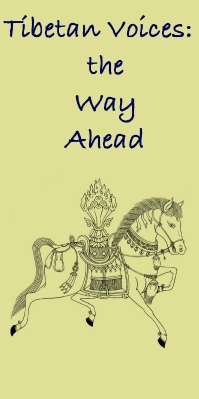Revolution inside Tibet is the key to success
by Tashi Phuntsok
Whatever comes out of this meeting, Rangzen or Autonomy, Tibetans inside Tibet and in exile, including TGIE, must respect it even if they do not agree with it. We must all be united, leaving aside petty ideological, sectarian, and regional differences. We must collaborate to make it work this time. Another failure would embolden the Chinese leaders to take our stand even less seriously. So much is at stake that we cannot afford to fail. The issue of Tibet is more than a political issue; it is about the survival of the Tibetan race and culture, and time is against us.
The biggest threat we face today, as a Tibetan race, comes from the deliberate and systematic alteration of the demographic composition of the Tibetan plateau. Taking advantage of its economic success in recent times, the Chinese Government is systematically encouraging and facilitating a massive influx of Chinese settlers in Tibet. In many places, particularly in Kham, names of towns and cities have been replaced by Chinese names. Tibetans resent calling their hometowns and cities by Chinese names, but they are forced to do so, since all the sign boards, mailing addresses, official documents, school textbooks, and the Han settlers who dominate them go by the Chinese names. Tibetans are imprisoned and tortured for expressing their discontent with the situation. With the railway now connecting China and Tibet, large numbers of Han settlers are pouring into Lhasa and other parts of TAR. The Chinese Government is considering opening further railway lines. This massive encroachment threatens to make Tibetans into an insignificant minority in their own country.
In fifty years of exile, we have concentrated our effort on preserving our culture and providing proper education to the future seeds of Tibet and what we have accomplished in this area is remarkable, to say the least. However, on the political front we have achieved very little in the way of pressuring China to resolve the Tibet issue and making our case to the international community to recognize the Tibetan Government in Exile as a legitimate government representing the Tibetan people. Henceforth our freedom struggle should focus on shaping a political movement inside Tibet. We should devote our resources and efforts to providing both material and organizational support to our brothers and sisters inside Tibet. As the movement evolves, a leadership will emerge eventually inside Tibet. Such clandestine operations will be risky and costly both in terms of lives and materials. But, if that is what it takes to shake up China, we must be prepared for it. If we succeed in establishing Tibet as an international trouble spot, we will not have to seek international attention, we will spontaneously receive it. (Details of what we can do will be discussed at an appropriate time).
We learnt a very important lesson from the March Uprising in Tibet that it is the Tibetan people inside Tibet who can shake China. If a spontaneous uprising without proper organization and guidance could attain revolutionary proportions, imagine what could have happened with proper organization. There are many examples in history where people’s movements have prevailed over brutal regimes. One that I find inspiring and somewhat similar to what happened in March in Tibet is the Romanian Revolution of 1989.
The Romanian Revolution of 1989 started from a small protest in the city of Timisoara in response to a government’s attempt to evict a Hungarian Pastor, Laszlo Tokes, who made critical comments towards the Nicolae Ceausescu’s Communist regime. As riots and protests escalated, the Romanian Military Force brutally cracked down on demonstrators and declared martial law in Timisoara, prohibiting people from walking about in groups of more than two people. Defying the martial law, a group of thirty young men ventured out in the street, waving the Romanian national flag from which they had effaced the Communist symbols and singing the outlawed national song, “Wake up, Romanians.” As expected, they were fired upon. Those young men’s defiance of the powerful Romanian army set events in motion which led to the end of Communism in that country. The revolt spread to the capital, Bucharest, and the rest is history.
For our movement inside Tibet, in addition to organizational and material support, our brothers need encouragement and moral support from His Holiness the Dalai Lama, other high lamas of all sects and the Tibetan populace in exile. No Tibetan who lays down his life for the cause of the country should go unrecognized. His sacrifice is and should be a part of our history. A monument honoring the martyrs with each individual’s name and birthplace should be erected in Gangchen Kyishong.
Bodh Gyalo!
“The revolution is not an apple that falls when it is ripe. You have to make it fall.”
The author is a biology teacher at a college preparatory school in Connecticut, U.S.A. He can be contacted at pytash@sbcglobal.net

